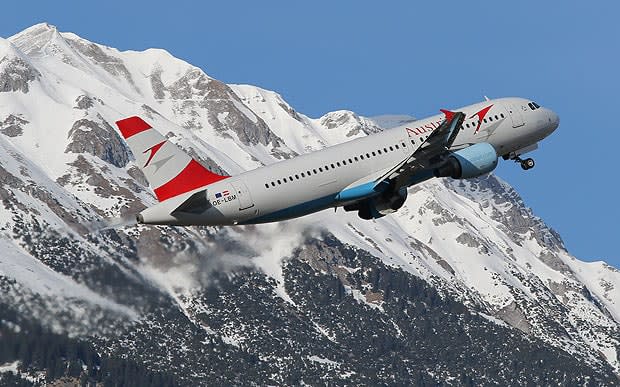High-altitude horrors: the scariest airport landings in the Alps

A pilot shared a breathtaking video of an aircraft landing at the notoriously difficult Innsbruck airport on Instagram.
Robert Kooyman’s footage shows the view from the cockpit as the plane flies through dense cloud before emerging in time to land on the runway.
A video posted by Rob K ���� (@robertkooyman001) on Sep 22, 2016 at 2:56am PDT
The descent into Innsbruck is one of the most dramatic approaches to any airport in Europe, as the plane travels through a deep mountain valley.
While the vast majority of airports are classed as Category A (no special procedures are necessary) or Category B (those that are “slightly out of the ordinary”), Innsbruck is a classic example of a Category C – those rather more tricky airports that “pose certain problems for the approach and/or landing and/or take-off”.
The Monarch Airlines pilot commented on the video: “As a captain, before being checked out into this airport, one of the requirements is to sit on the jumpseat, the seat behind the captain and first officer. So you get an idea of what this airport is all about! This is after you get simulator training and before you're flying in there yourself with another training captain. Then you're Innsbruck checked and ready to go!

“Every winter after that we have to do the simulator training again to update us on the latest procedures! Great fun!”
As highlighted by Captain Kooyman, only experienced pilots who have undergone simulator training and sat in the jumpseat for landing and take-off are allowed to fly there.
Why is it so difficult? Challenging visual manoeuvring within the valley, made harder by low-level wind shear (a sudden change of wind velocity and/or direction), come as standard. The approach is fraught with challenges for the aircraft's captain, who is the only one allowed to fly the plane – the first officer isn’t qualified.

Pilots must first avoid a 2,400m mountain, before navigating the turbulence caused by winds blowing in from the south across the Brenner Pass. Depending on the wind direction, the pilot may need to make a tight turn as part of the descent, too.
Innsbruck is a regular skiers’ airport, offering access to resorts including the Stubai glacier, Sölden and Obergurgl in the Ötztal Valley, Mayrhofen and Alpbach.
And it’s not the only Category C airport in the mountains. Here are four more of the trickiest Alpine airports a pilot can tackle.
Chambéry, France
A popular airport for accessing ski areas in the French Alps such as the Trois Vallées, Val d’Isère-Tignes and Paradiski, Chambéry is also a Category C, and described as “a very tricky airfield that requires serious preparations” on airport information blog Pilots Briefing Room. The airport lies at the southern end of Lac du Bourget, with mountainous terrain to the east and west of a plane’s approach, and more high terrain south of the airport.

Some approaches require visual manoeuvring (otherwise known as circling – when a pilot has to bring the aircraft into position for landing on a runway that isn't suitably located for the standard, straight-in approach). Alpine weather and winds can change rapidly too, meaning pilots may have their landing runway altered at the last minute.
Sion, Switzerland
Landing at this little-used airport in the Valais region requires dropping down into a valley with mountains on all sides, hence its Category C status. The approach is technically very difficult, because the airport is surrounded by Alpine peaks and the descent is steep. However, once safely landed you get speedy access to resorts such as Verbier and Val d’Anniviers.
Salzburg, Austria
This alternative gateway to the Austrian Alps services ski resorts including Schladming, Obertauern and Saalbach-Hinterglemm-Fieberbrunn. It’s another Category C due to mountainous terrain to the south, making the approach more challenging.
Courchevel, France
The tiny altiport located in the resort of Courchevel 1850 is Europe's highest tarmacked runway at 2,010m. Measuring just 537m, it’s too short to safely accommodate most types of aircraft – commercial planes and even private jets aren’t allowed to fly there. It’s only suitable for turbo-prop planes.

In acknowledgement of the difficulty of the flight through the mountains and the landing itself, which requires a steep descent before hitting the uphill gradient of the runway, only those with a special “Qualification of Sight” licence are permitted to land at Courchevel altiport. Fewer than 100 pilots have this licence today.

